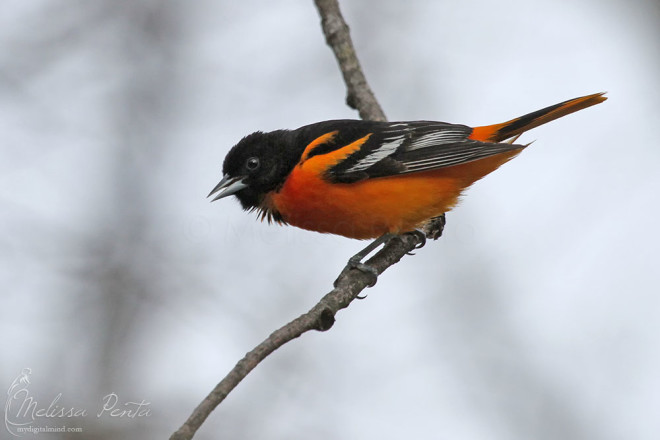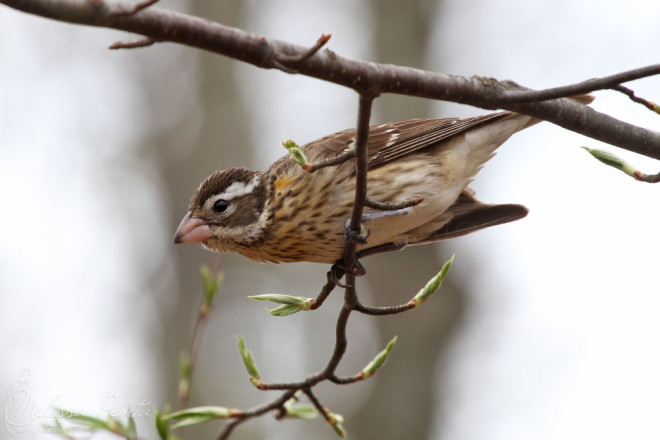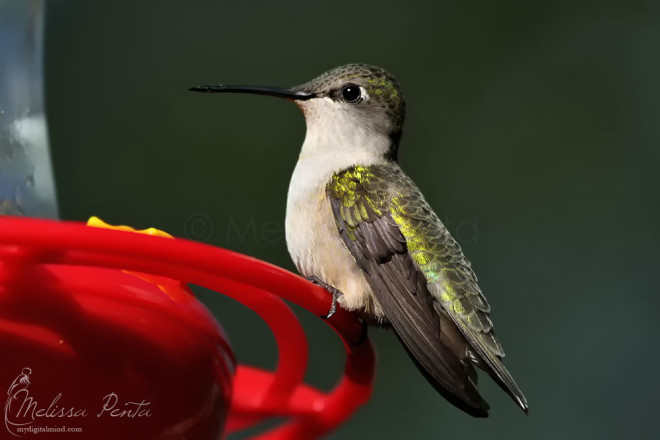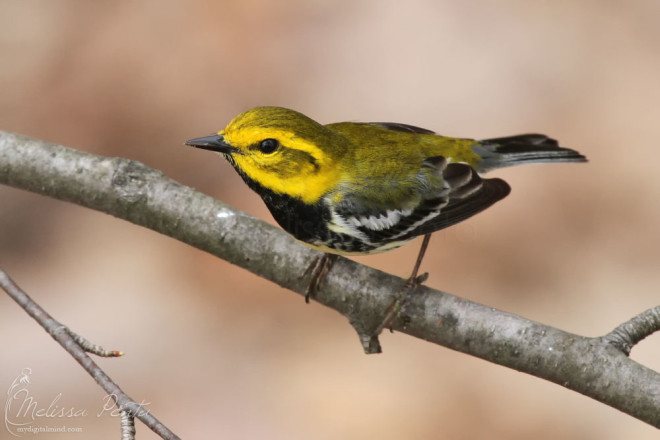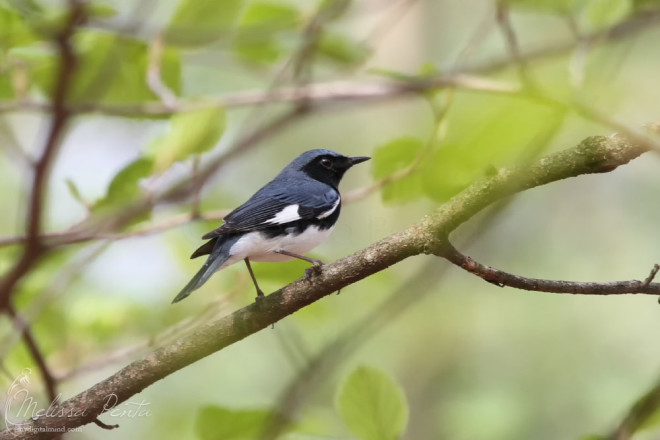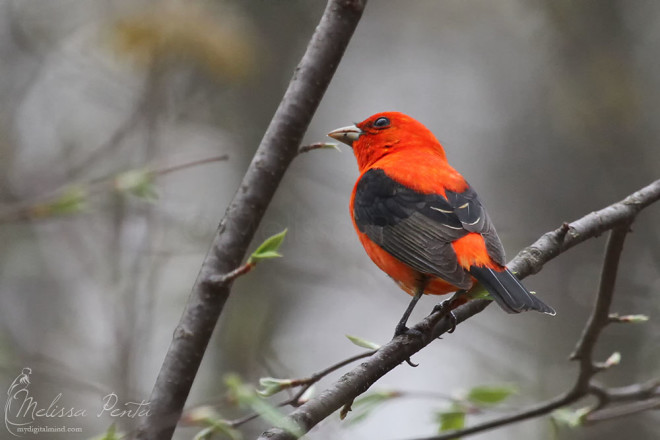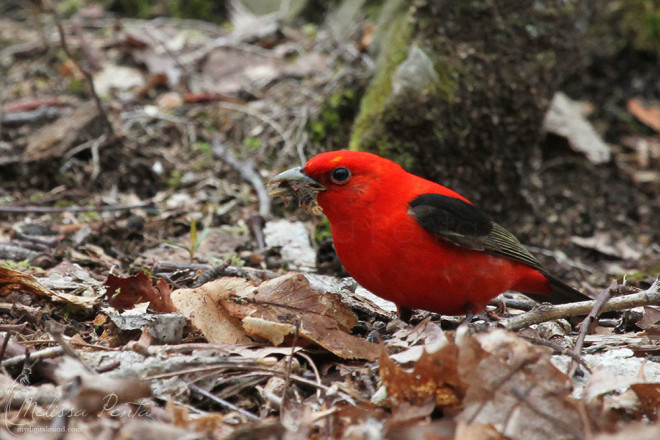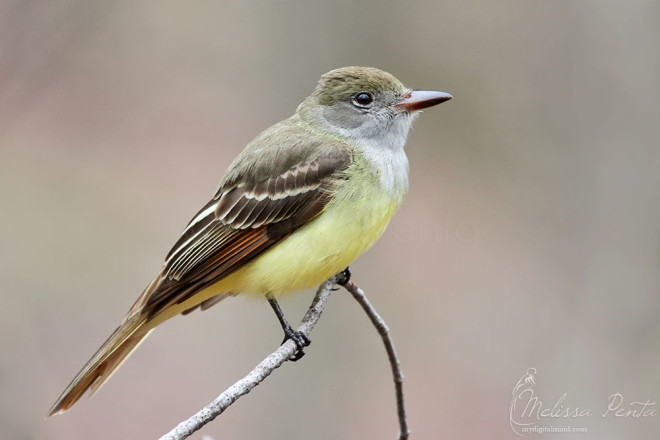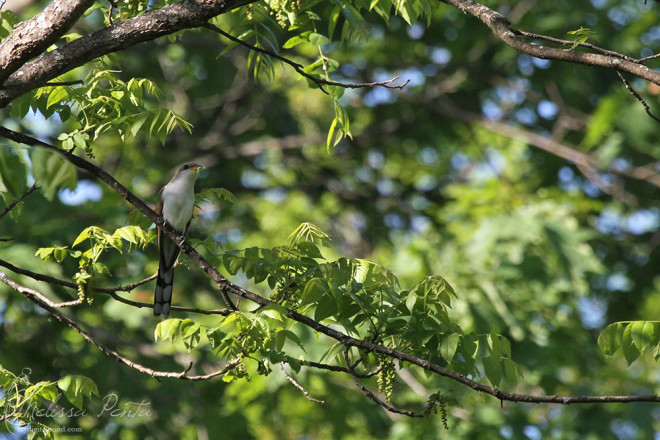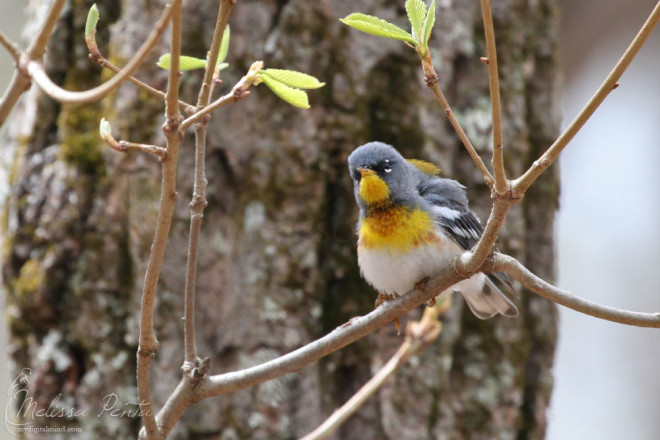If I were to describe this year’s spring migration in one word, it would be “outstanding.” Especially in my very own yard. Within a couple of months, my yard bird list went from below forty to over eighty – EIGHTY – species of birds (84 to be exact, and 80 total in 2014 so far). All of these birds were either seen or heard from my house – not from acres of land, but from either one of my decks on my [less than] .4 acres of property. This far exceeded my expectations – especially after leaving such a great hotspot in New York. As of today, I have 15 species of birds on my PA yard list that I did not have on my NY yard list and I am a little over 20 species away in matching my NY list, which had a final count of 106 over three years.
This spring marked the return of breeding birds that grace many people’s backyards such as Baltimore Orioles, Rose-breasted Grosbeaks and our tiny Ruby-throated Hummingbirds. The Hummingbirds continue to visit daily.
These were expected yard birds; the unexpected birds came in waves – very large waves. And they kept on coming. The best part is that there were no leaves on the trees, so I could actually SEE the birds. Many of them even came close enough to my deck for photo ops.
One of my most common migrant visitors were Black-throated Green Warblers. I had them singing for a few weeks before they completely moved on.
Yellow-rumped Warblers were my other most common migrant. I could see them at any time of the day foraging high and low, near and far. They were everywhere!
My best Warbler surprises were Blackburnian males and tons of Northern Parulas. I even had a surprise Canada Warbler singing from further in the woods.

Blackburnian Warbler, right after he perched about 5 feet away from me (no, I did not get a photo of THAT)
Other Warblers included American Redstarts, Ovenbirds, Bay-breasted, Black-and-white, Black-throated Blue, Blackpoll, Chestnut-sided, Magnolia, Nashville, Palm, and Pine Warblers.
During this migration madness, I had an addition built onto my house – a large deck that comes off of my renovated porch (now sunroom). I was able to enjoy the birds at eye level from this deck and my (already existing) balcony.
In fact, some days, I did not need the extra elevation because the birds seemed to prefer to feed down low. I had at least four male Scarlet Tanagers feeding on the ground at once, along with a few females. This is a bird that is usually seen high up in the tree tops. What a treat!
Now that migration has slowed down, I have other breeders who sing every day. This includes the very first bird that I heard in my yard before I actually owned it last June – the Eastern Wood-Pewee.
Another bird that I hear throughout the day is also a flycatcher who sing early with the Robins and are calling as late as 9PM! Great Crested Flycatchers are fun to watch. I often see the local pair hawking insects together.
Red-eyed Vireo and Wood Thrushes continue to serenade me with their songs, just as they did in New York. I love hearing both of them!
Some other notable migrants that I’ve had are Indigo Buntings, Willow Flycatchers, Eastern Kingbirds, Blue-gray Gnatcatchers, both Kinglets, Hermit and Swainson’s Thrushes (I finally heard the Swainson’s sing!), Blue-headed and Yellow-throated Vireos, Cedar Waxwings, Common Ravens, Osprey and Broad-winged Hawks. Oh! And how can I forget my most recent yard bird, the Yellow-billed Cuckoo, who I heard calling multiple mornings!
Migration was awesome this year. I hope that this sets the tone for what my yard will be like every spring. In New York, I only had a good fall migrations – it was nice getting the spring colors and songs. Too bad peak migration only lasts about a month – I already miss waking up to the songs of Blackburnians, Parulas, Black-throated Greens…


